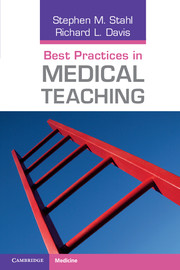Book contents
- Frontmatter
- Contents
- Preface
- About the authors
- Foreword
- Acknowledgments
- Introduction
- 1 Applying the principles of adult education to the designing of medical presentations
- 2 Using audience learning psychology to advantage in designing and delivering medical presentations
- 3 Executing the principles of adult learning in medical presentations
- 4 Measuring outcomes and ensuring success
- 5 Using interval learning in a comprehensive medical educational program
- References
- Progress check answer keys
- Progress check answer sheets
- Index
Preface
Published online by Cambridge University Press: 05 August 2011
- Frontmatter
- Contents
- Preface
- About the authors
- Foreword
- Acknowledgments
- Introduction
- 1 Applying the principles of adult education to the designing of medical presentations
- 2 Using audience learning psychology to advantage in designing and delivering medical presentations
- 3 Executing the principles of adult learning in medical presentations
- 4 Measuring outcomes and ensuring success
- 5 Using interval learning in a comprehensive medical educational program
- References
- Progress check answer keys
- Progress check answer sheets
- Index
Summary
This book was conceived and developed to be a change agent for medical educators. We hope that the principles, concepts and illustrations contained within will raise the effectiveness of those who teach. One might consider the contents of this book to be the “rest of the story” concerning current medical education practices. That is, the tools presented in this book are intended to be the communication complement to the traditional subject matter content of medical education. The premise of this book is that combining the science of communication with the communication of science creates an incrementally more valuable exchange for both the instructor and the learner.
Hopefully there will be something in this book for everyone, from novice instructors to the most experienced mentors. Novice medical educators may discover many new principles about how to assist others to learn. In fact, this book is organized with the first section examining how to apply the principles of adult learning to the design of effective educational presentations. The second section focuses on gaining an understanding of the many and various aspects of the different learners represented in any medical audience. This is followed in the third section by information on the instructor's performance and the impact it can have on effectiveness. The last area discussed is how to measure and evaluate educational programs to see if they have reached their desired outcomes. Each chapter is followed by a knowledge check and an assessment section.
- Type
- Chapter
- Information
- Best Practices in Medical Teaching , pp. vii - viiiPublisher: Cambridge University PressPrint publication year: 2011

